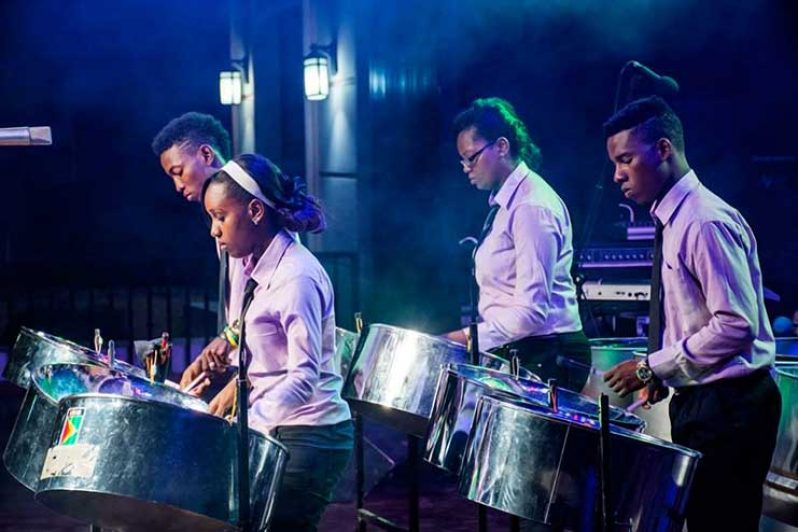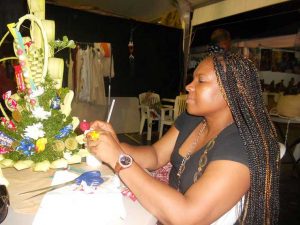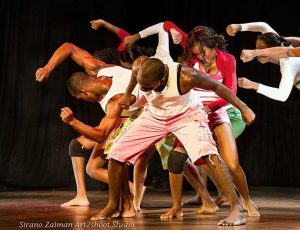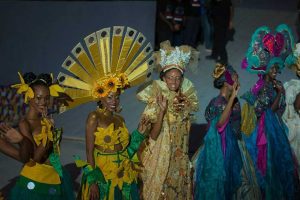– from the memories of past participants
By Ravena Gildharie

WHETHER it has impressed or disappointed, the Caribbean Festival of Arts, or CARIFESTA, as it is popularly known, is undeniably cemented in Caribbean history as a vehicle of fostering regional integration and the strengthening of cultural identity among participating nations. It brings together one of the largest gatherings and displays of Caribbean arts, culture, cuisine, music, fashion, entertainment and more, all spread across a stretch of 10 days of spectacular shows and performances in various host countries.
Since 1972, when a 60-member troupe from Jamaica’s National Dance Company led by Rex Nettleford pulled off an exhilarating folklore illustration of music and dance on stage at an unfinished National Cultural Centre (NCC) in Guyana, thousands of persons from across the region have participated in CARIFESTA over the years. Some participants took part in more than one of the festivals staged in more than eight countries since its inception.
This year, as Guyana readies a 60-member group to showcase their talent in Barbados from August 17-27, past participants are reminiscent of their CARIFESTA experience.
Designer, Carol Fraser, recalled coordinating Guyana’s fashion showcase at CARIFESTA XI in Suriname during 2013, while in 2015 she sponsored her own presentation in Haiti alongside Guyana’s contingent. She enjoyed significant exposure as a fashion and art designer, received invitations for other Caribbean showings and even landed export markets for her products, some of which she still supplies.
“For me, CARIFESTA is a platform to showcase our culture and to aid in the creation of our Guyanese identity especially as the only English-speaking, South American nation with a diversity of ethnicity and culture. And I believe we can do it through our various forms including fashion, and that is what I do,” Fraser told the Pepperpot Magazine.
In 2013, Fraser led five local designers to the CARIFESTA runway in Paramaribo. Each participant depicted their unique style and design but altogether featured Guyana’s culture which the Caribbean people could have identified. She recalled that Suriname’s ‘Djuka’ were very impressed with Anita Daniels’ African-themed clothing, while Jenifer Gibson’s Caribbean-inspired line attracted a lot of interest as well. Fraser was invited to participate in Haiti’s Fashion Week based on her showing at CARIFESTA but she was unable to attend.
However, for CARIFESTA 2015, she sponsored her own participation in Haiti where she created a stir. “I sold out 80 percent of my products in Haiti as the Haitians were very fascinated with my white and flair designs,” Fraser said.
Participants as cultural activists
She noted that designers and other participants can use their various art forms to tell a story about their country and when they go to display at CARIFESTA, they should remember that they are representing Guyana, not just as fashion designers, but as cultural activists.
Like Fraser, Dexter Dey of the National Steel Orchestra participated in CARIFESTA three times; in Guyana (2008), Suriname (2013) and Haiti (2015). He rated the experience as “awesome” as he recalled joining groups of about 15 steel pan players who performed and entertained to the best of their ability, as they represented the rich Guyanese culture. He said the regional audience was impressed with the use of old oil drums to produce such melodious and popular music.
In Suriname, the Guyanese band played classic pieces, national and folks songs such as ‘Oh Beautiful Guyana,’ ‘Sanko Boy,’ ‘Bamboo Fyah’ and ‘Bangalie Baboo.’ In Haiti, folk songs, including ‘Kuma Kuma Fish’, ‘Missy Loss She Gold Ring’, ‘Bamboo Fyah’ and ‘Uncle Joe’ formed part of the group’s presentation.

Guyana usually partakes in each of the more than 13 categories that are included in the Caribbean Festival such as Craft, Culinary Arts, Fashion, Film Festival, Literary Arts, Performing Arts, Visual Arts, Symposia, Animation, Storytelling Events, Grand Cultural Market, Trade Fair, Youth Focus and Community Festival.
Mark and Beryl Bernard of St Cuthbert’s Mission promoted Guyana’s indigenous art and craft at CARIFESTA in Trinidad (2006), Guyana (2008) and Suriname (2013).
They participated under the Guyana Arts and Craft Association and enjoyed the regional exposure. Impressed with the Caribbean’s response, the couple’s daughter Miranda Bernard said she will be at CARIFESTA next month with the existing Art and Craft Producers Association of Guyana. She told this publication that she will showcase a variety of Amerindian craft such as straw hats, floor mats and fruit baskets.
CARIFESTA was birthed in Guyana during 1970 based on an appeal from a group of regional artists who were then meeting in Georgetown for a Writers and Artists Convention. The Caribbean Festival was intended to be an inspiration and one that would provide artists with the opportunity to discuss among themselves techniques and motivations and to be educational, exposing Caribbean people to the values emerging from the various art forms. It was expected too, to relate to people and be entertaining on a scale and fashion that would commend itself to the Caribbean people.
For the inaugural hosting in 1972, Guyana’s, now late Prime Minister, Linden Forbes Sampson Burnham instructed the building of 100 houses in North Ruimveldt- today known as Festival City- to accommodate the 25 delegations invited to participate. Also, by December 1971, the 2000-seat National Cultural Centre (NCC) on Homestretch Avenue was being built to stage the performances.
In his publication “Musical Life in Guyana: History and Politics of Controlling Creativity”, Professor Vibert C. Cambridge stated of CARIFESTA 1972: “From Jamaica came the pulsating drumming of Count Ossie and the Mythical Revelations of Rastafari. This was the first time that many Guyanese had seen or heard this aspect of the expressive culture of Rastafari.”
He added, “CARIFESTA ‘72 did have benefits for Guyana. The nation’s profile rose within the Caribbean community, and Guyana deepened its role in the development of the Caribbean integration movement.”
Guyana’s Brand at Carifesta
Back in 1972, the Carnegie School of Home Economics catered for the participants and helped set up the Festival City houses. The School produced ‘A Taste of Carifesta,’ a recipe book that features Guyanese dishes. The school has since participated in each of the festivals and is currently preparing for the next.
In addition to students from the school, the group will include a few young producers who will exhibit various culinary skills.
“Carnegie School of Home Economics forms an integral part of Guyana’s representation at CARIFESTA , The school was there at the first Carifesta in 1972 and we continue to participate to showcase Guyana’s diverse cuisine,” said current Principal, Penelope Harris. She has guided the school’s participation at CARIFESTA 2008, 2013 and 2015.
“In 2008, we actually catered for the participating delegations in Guyana, while we did some demonstrations of local foods and exhibited some of the locally-produced products in Suriname and Haiti. For Suriname, we collaborated with NAMILCO to showcase some of their flour products while for Haiti, we promoted Champion Chowmein and their other line of Champion products,” she recalled.
She said Guyana’s Pepperpot and Black Cake are “star dishes” at CARIFESTA while people have also shown great interest in the roti demonstrations.
“Guyana has a diversity of culinary delights based on the various cultures and I think as we use CARIFESTA to foster and promote our culture, we should also be using it to create and promote a ‘Guyana Brand’, a fusion of the various food and culture,” Harris indicated.
Based on her experience over the last decade, she concurred that CARIFESTA is still an ideal means of forging regional integration using culture to blend its people. She observed too that its gives each participant the exposure needed to better improve their individual talents, skills, craft and produce to meet international standards.
“Once you get to represent Guyana at CARIFESTA, you get to see the quality in terms of raw materials, presentation and even the procedures used in the culinary area and you can use that experience to improve,” Harris said.




.png)













